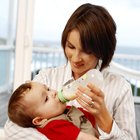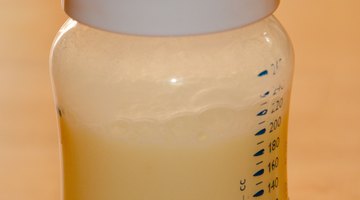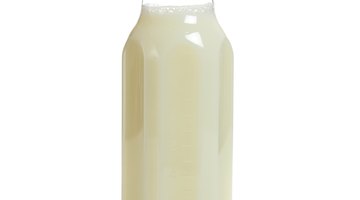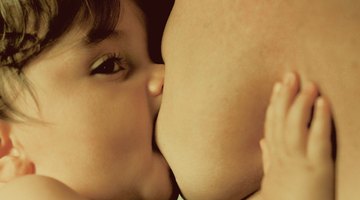At What Age Can You Stop Warming Up a Bottle for a Baby?
Many parents know the proper method for heating up a baby bottle, but some are unsure of when and how to transition from a warm bottle to cold milk. What may be surprising to many parents is that there are no rules for when to stop warming up a baby bottle. In fact, whether to warm the bottle at all is completely a personal preference and some parents feed their baby room-temperature or cool milk right from the start.
Cold Milk versus Warm Milk
In general, whether to serve your baby warm, room-temperature or cold milk is a personal decision, not a health concern. There is no nutritional difference between warm, cold or room-temperature infant formula or breast milk. Some parents find that their baby prefers warmed milk or formula because it is closer to the temperature of the human body, and therefore closer to the temperature of breast milk. Other parents opt for the convenience of skipping bottle warming altogether and find that their babies take the cold or room-temperature bottle without complaint.
Why Make the Switch

Can You Feed a Baby Cold Breast Milk?
Learn More
There are a few reasons to switch from heated bottles to cooler-temperature milk or formula. Heating breast milk to a high temperature can destroy some of the valuable antibodies and other immune factors that make it so healthy. Heating either breast milk or formula in plastic baby bottles could allow chemicals to leach out of the plastic and into the milk, although special BPA-free bottles are safer than standard polycarbonate baby bottles. Other parents choose to not warm their baby's bottles because it takes too much time and they would rather get the baby fed more quickly.
Switching to Cold Milk
The switch from warming up baby bottles to giving your child non-warmed bottles often occurs by accident. While the primary caregiver of a baby is often diligent about serving the baby warmed bottles, someone who watches the child only occasionally may inadvertently give the child a cold or room-temperature bottle for the first time without thinking about it. Many babies make the switch to cold milk when the primary caregiver steps out for a moment and the other parent, babysitter or grandparent hands the hungry baby a bottle of formula made from room-temperature water or pumped breast milk straight from the fridge. If you want to go about it more gradually, or if your baby rejects anything that isn't warm, you can offer the baby slightly cooler milk every day until she is drinking it at the temperature you would like.
A Little Precaution

Does Baby Formula Need to be Warmed Up?
Learn More
If you do choose to feed your baby unheated formula, be sure to use cold water straight from the tap, water that has been boiled and cooled or bottled water to make it, since the hot water from your faucet has been sitting in a water tank where minerals or chemicals could have leached into the water. Do not leave bottles of breast milk or formula out at room temperature for long periods of time, since bacteria that can make your baby ill can grow rapidly in it.
Related Articles
- Palo Alto Medical Foundation; Sutter Health: Basics of Formula Feeding
- "Pub Med"; Food Additives and Contaminants"; Migration of Bisphenol A from Plastic Baby Bottles, Baby Bottle Liners and Reusable Polycarbonate Drinking Bottles; Kubwabo, et al; June 2009
- National Network for Child Care: Guidelines for Bottlefeeding











